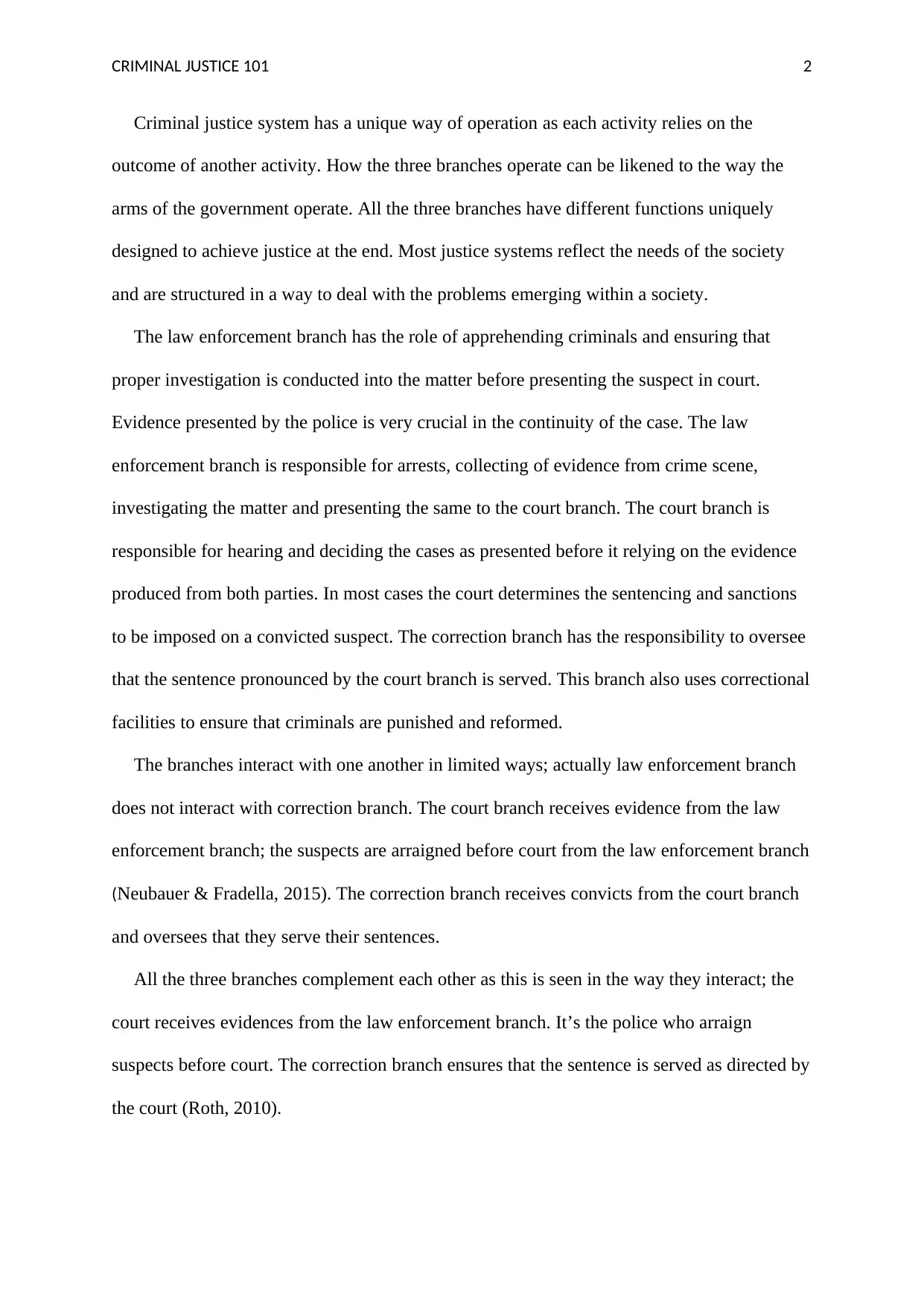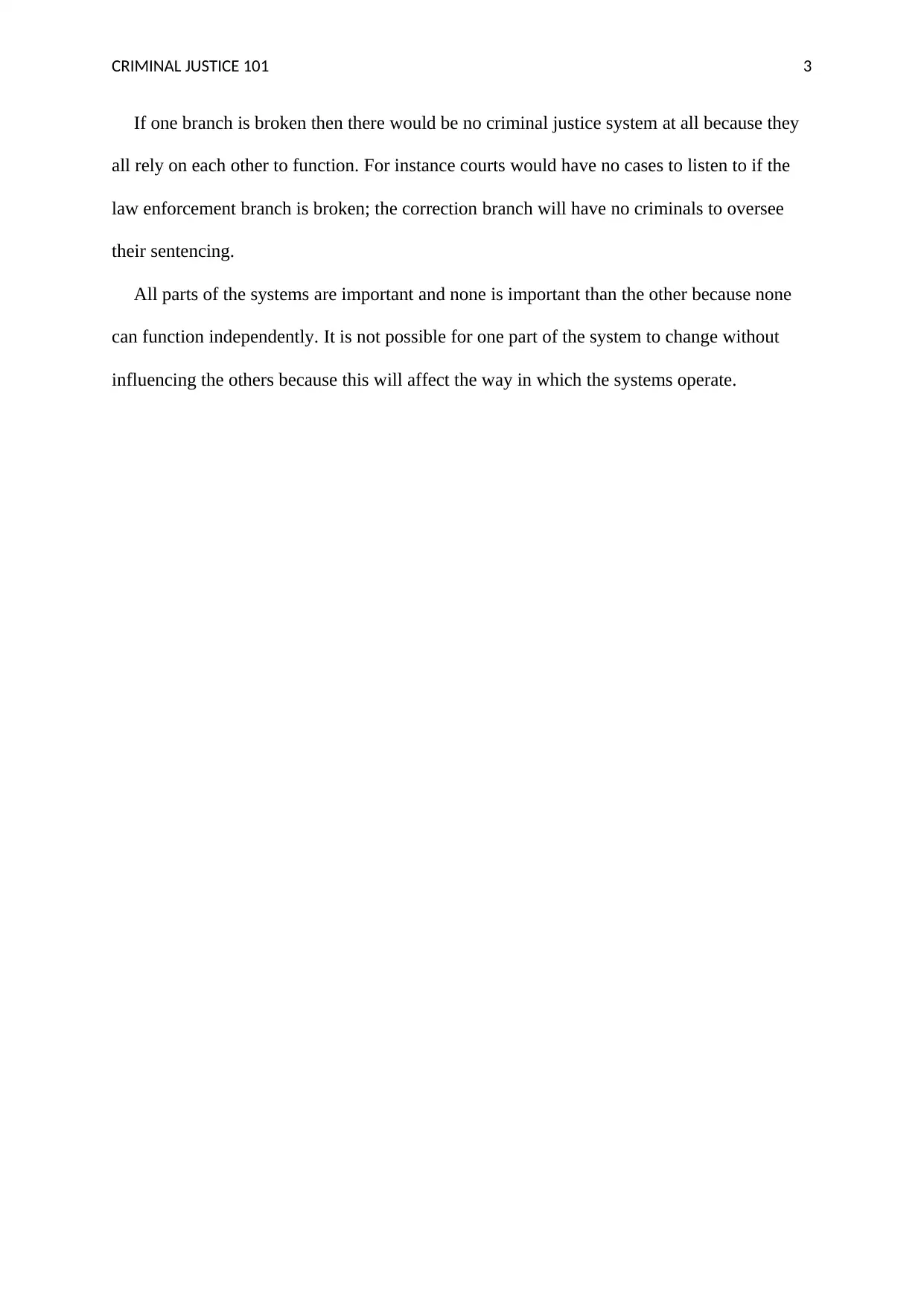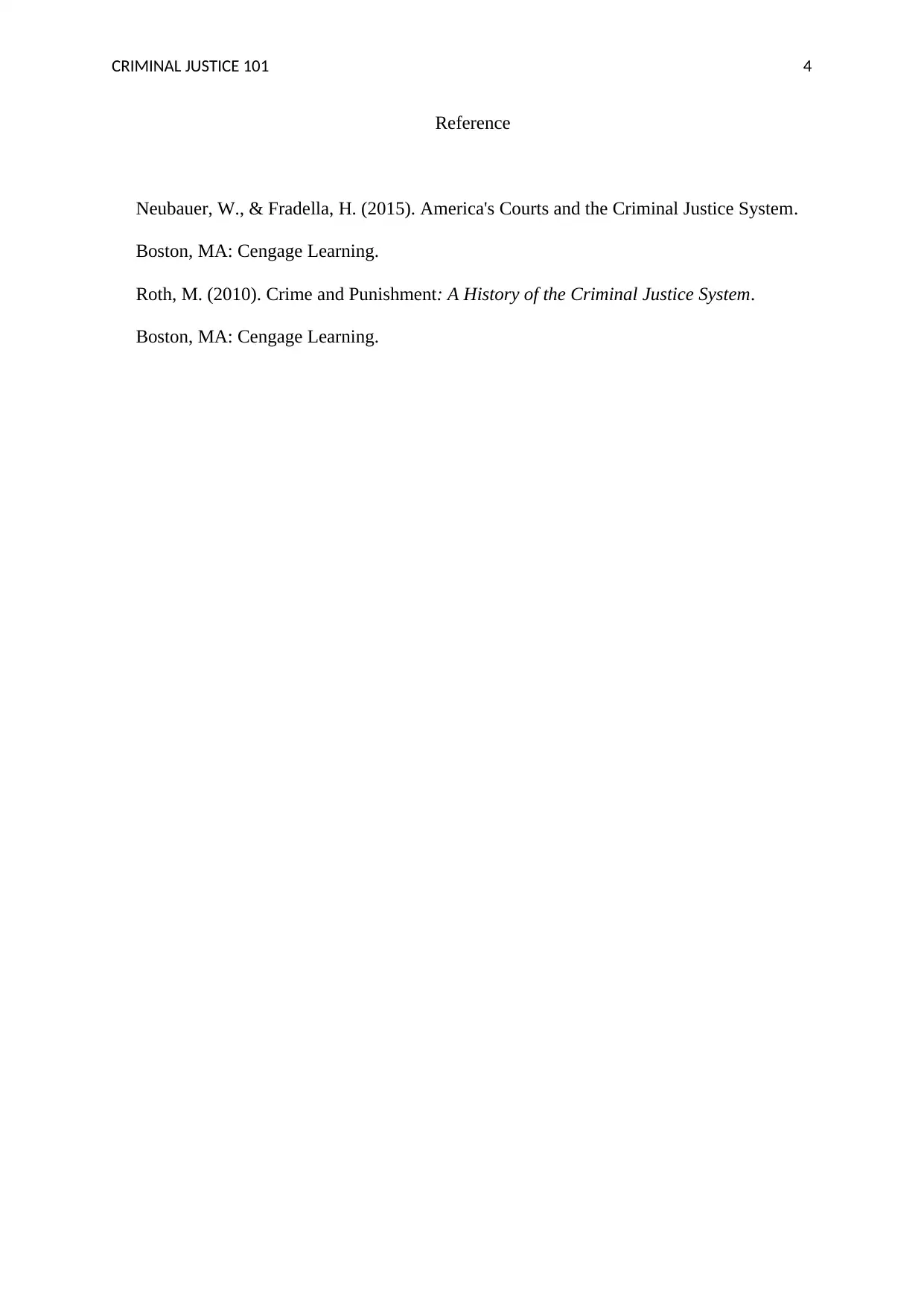Criminal Justice System and its Three Branches
VerifiedAdded on 2023/03/17
|4
|534
|95
AI Summary
This article explores the functioning of the criminal justice system and its three branches: law enforcement, court, and correction. It discusses how these branches interact and rely on each other for justice.
Contribute Materials
Your contribution can guide someone’s learning journey. Share your
documents today.
1 out of 4
![[object Object]](/_next/static/media/star-bottom.7253800d.svg)








